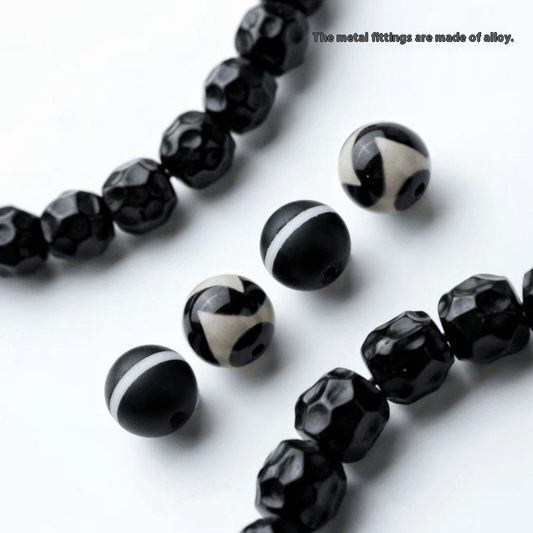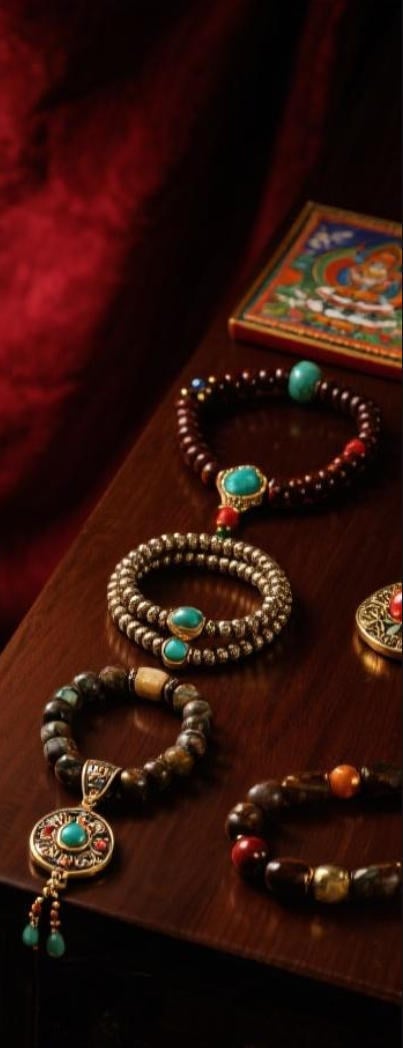
Inside the elaborate network within Himalayan sacred teachings appear two valuable masterpieces: the traditional thangka and bodhi prayer bead. Every single one, in individualized approach, enables transcendental awakening. The thangka, an elaborate depiction, features deities, cosmic designs, or scriptural scenes, supporting mindfulness exercises.
By comparison, the bodhi bead, often crafted from precious gemstones, lumber, grains, or hard tissue, is a tangible reminder of Buddha's enlightenment under the bodhi tree. Holding these beads during prayer or meditation helps to focus the mind.
- Together, the thangka and the bodhi bead symbolize the fusion of creativity and faith. They offer a tangible link to the timeless doctrines of Tibetan Buddhism.
Myths Carved in Camel Bones
Within historic timelines, primordial treasures whisper tales regarding a world long forgotten. These are not treasured objects of disregarded empires, but unpretentious camel bones incised with glyphs that retain the arcana of a bygone time. Single shards carry the echo in a life lived, a journey traveled, and a connection to the ancestral wisdom of which surrounds us all.
- These fragments
- Treasures
- Provide
Decoding the Spirituality of Thangka Artworks
Tangkas are striking paintings on canvas, meticulously crafted by Tibetan artists to depict revered figures and scenes from Buddhist literature. Each detail within a thangka is laden with interpretation, forming a complex tapestry of visual narratives that guide the viewer on a philosophical journey. The shades used in thangkas are not merely aesthetic choices but carry fundamental connotations, reflecting different aspects of the Buddhist practice. From the majestic figures to the intricate ornamentation, thangkas offer a outlook into the rich world of Tibetan Buddhism, inviting us to ruminate upon its teachings.
- Historical thangka art often depicts key Buddhist figures such as Buddha Shakyamuni, Bodhisattvas like Avalokiteshvara and Manjushri, and enlightened beings from various branches of Tibetan Buddhism.
- Inside these representations lies a wealth of knowledge that can be understood by those who analyze the symbolic language of thangkas.
Awakened One's Path to Enlightenment: Embodied in Beads and Bone
Upon the winding road to nirvana, the Buddha used insignia imbued with profound meaning. Each bead and bone held within them the essence of his transcendent vision, manifesting glimpses into the unfolding of reality. By means of their contour, the Buddha transmitted profound revelations that outshine the realm of tangible perception.
From chosen prayer beads, crafted from valuable materials, radiated vibrations that matched with the refined forces within. The remains of a creature, meticulously transformed into insignia, served as tangible symbols of the impermanence basic to all manifestations.
Thangkas: Windows into Himalayan Spirituality
Thangkas vibrant paintings on cloth serve as expressive representations of Himalayan spirituality. These intricate works of art, meticulously created with precise brushstrokes, depict a vast array in Buddhist deities, mandalas, and scenes from historic scriptures. Each thangka is an enlightening window for meditation and contemplation, offering awareness into the subtle teachings of Buddhism.
- They are often used in ritual ceremonies within the framework of
- reflecting states of spiritual realization.
- Thangkas operate as not merely decorative works but rather entries into the rich and captivating world of Himalayan spiritual traditions.
Bodhi Beads: A Journey Through Mindfulness and Compassion
Each orb on a bodhi bead mala whispers tales of ancient wisdom, guiding us on a passage through the tranquil waters of mindfulness. As we grip these intricately made beads, our fingers trace the contours of every one, anchoring our awareness in the present moment. The gentle substance of the beads against our palms serves as a tangible reminder to draw breath, fostering a sense of serenity.
- For every bead that passes between our fingers, we develop compassion, extending it first to ourselves and then outward to the world.
- Sacred teachings teaches us that mindfulness is a skill that requires patience and persistence.
By the use of the rhythmic repetition of mantra or simply the mindful tallying of the beads, we break free from the relentless chatter of the mind.
The practice utilizing bodhi beads is a graceful invitation to revive our connection with ourselves and the world around us.
Intentional Craftsmanship: Making Camel Bone Bracelets for Inner Evolution
Resolve forms a significant motivator in our lives, shaping our experiences and guiding us towards our intended direction. When we combine this intention with the ancient wisdom of crafting a camel bone bracelet, we create a potent synergy that can accelerate our spiritual growth.Camel bone remains deeply resonant, representing strength. Its natural beauty and timeless allure serve as a constant reminder of the inherent power within each of us.In the process of handpicking each bone, embed spiritual goals. With every knot or connection, we implant our hopes, dreams, and aspirations for spiritual evolution. This act of creation becomes a spiritual custom, merging us with our inner wisdom and guiding us on a exploration of consciousness.- Match the bone’s tones to your aspirational themes.
- Envision the bracelet becoming a conduit for your intentions.
- Bless the bracelet in ceremonies to infuse vitality.
Unveiling the Significance of Camel Bones in Buddhist Traditions
In the rich tapestry surrounding Buddhist tradition, artifacts often hold profound symbolic meaning. Among these varied objects, camel bone stands out as a distinct and absorbing element. Throughout history, this material has been integrated in the crafting through various Buddhist accessories, each imbued with specific meanings.
- Recognized as a symbol of resilience and strength due to the camel's ability to bear in harsh environments, camel bone often represents spiritual fortitude.
- Moreover, the color and texture regarding camel bone are believed as some to hold auspicious connotations, denoting purity and serenity.
Accordingly, camel bone has become a important part of Buddhist lineage, serving as a tangible nexus to the profound teachings involved in this ancient faith.
Thangka Art: Weaving Tales of Divinity
Within the ethereal realm of Tibetan Buddhism, Thangka paintings emerge as sacred portals to enlightenment. These exquisite works, meticulously crafted by skilled artists known as thangkapa, depict a myriad consisting of vibrant deities, celestial beings, and mythical creatures. Each brushstroke embodies profound spiritual significance, narrating ancient tales and philosophical teachings.
- Encompassing a vast reservoir of Buddhist iconography, Thangkas serve as both devotional objects and instructional tools. Zealous practitioners gaze upon these paintings during rituals and meditations, seeking to gain spiritual wisdom.
- Richly detailed with intricate details alongside a multitude of vibrant hues, Thangkas are considered windows into the divine. Every painting acts as a symbolic representation of the Buddha's teachings and the path to liberation.
By the use of their dominant imagery and symbolism, Thangka paintings offer a glimpse into the rich philosophical traditions of Tibet. They are a testament to the enduring skill of Tibetan art and its profound ability to stimulate.
Embracing the Duality: Thangkas and the Cycle of Life and Death
Thangkas, radiant pictorial scrolls from Tibetan culture, embody a meaningful examination of life’s transience. Each intricate depiction depicts deities and beings engaged in the progressive venture of life and death, a mosaic Buddhist jewelry of birth, growth, impermanence, and revival. The artists skillfully weave these concepts within the thangka's domain, highlighting the linkage of all things. Through vivid motifs, they invite us to reflect on our own experience. The cycle continues, a pattern of coming and going, reinforcing the preciousness of each moment. By embracing this duality, thangkas teach us to value the beauty in both life's joys and sorrows.String of Mindfulness: The Significance of Bracelets in Buddhist Practice
In the intricate tapestry of Buddhist practice, seemingly modest objects often hold profound meaning. Among these are bracelets, which serve as tangible signs of devotion and commitment to the philosophy of Buddha. Worn on the wrist, a bracelet exists as a constant reminder of one's aspirations and aspirations. It can represent the impermanence of life, prompting practitioners to remain aware in the present moment. Some bracelets may include sacred marks, such as mantras or the names of Buddhas, which are deemed to summon positive energy and defense. Others might be made from constituents with spiritual significance, like sandalwood or lotus seeds, strengthening the bracelet's impact. Ultimately, the significance of a Buddhist bracelet stems far beyond its physical form. It becomes a powerful tool for mindfulness, a encouragement to live in harmony with the teachings of Buddha, and a expression of one's unwavering commitment.